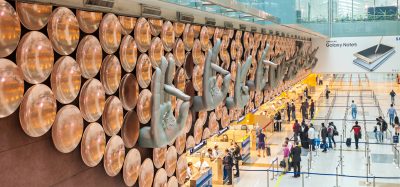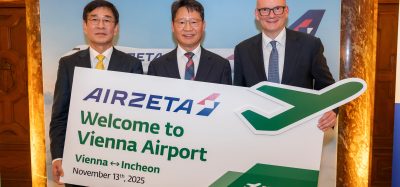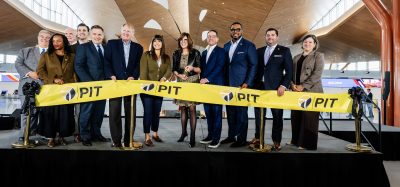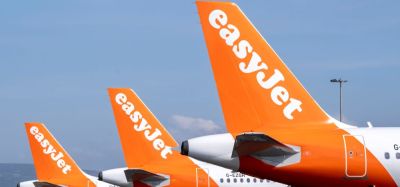An innovator’s playground! Munich Airport is at the forefront of innovation
Posted: 24 January 2025 | | No comments yet
Jost Lammers, CEO of Munich Airport, speaks with International Airport Review about how co-innovation is enabling the development and integration of forward-thinking technologies into the complex aviation environment.
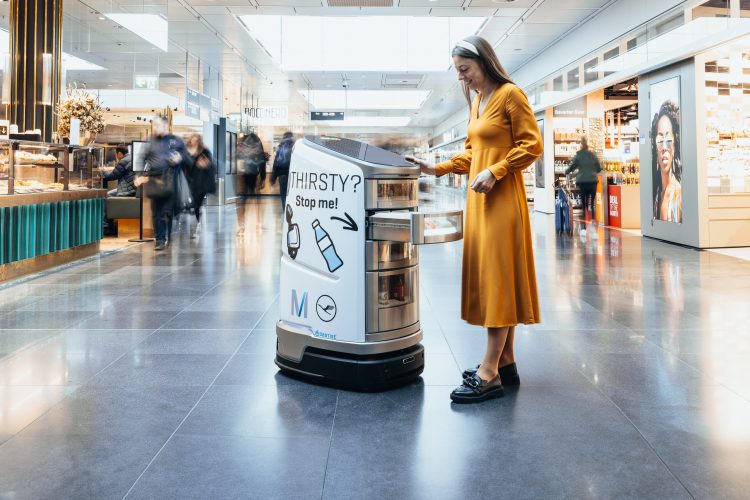

Credit: Munich Airport
Munich Terminal 2 is a unique joint venture between the Lufthansa Group and the airport, how do you collaborate with Lufthansa Group on innovation?
Munich Airport and Lufthansa have committed to a joint sustainability strategy, the expansion of Munich as an intermodal transport hub, the demand-driven expansion of the terminal infrastructure and the development of digitalisation and innovations in operations.
This is also underlined by the MUC2030 initiative, signed with Lufthansa for the further development of the Munich premium innovation hub. It includes projects such as smart passenger and automated handling processes to make passengers’ travel experience even more pleasant and efficient. We are working very closely together and exchange ideas to optimise our hub and make it fit for the future. This also includes a close partnership with the Lufthansa Innovation Hub.
You recently welcomed your newest addition to the airport family at Munich, the snackbot JEEVES, what kind of experiences is he creating and how else are you implementing robotics/automation into your operations/passenger experience strategy?
Our Snackbot has become a popular member of our airport family in recent months and brings a smile to our guests’ faces every day. Although it has already become an integral part of the terminal landscape for us, most passengers see it for the first time and enthusiastically pull out their smartphones to take a souvenir photo or video of our Snackbot.
Join our free webinar: Revolutionising India’s travel experience through the Digi Yatra biometric programme.
Air travel is booming, and airports worldwide need to move passengers faster and more efficiently. Join the Digi Yatra Foundation and IDEMIA to discover how this groundbreaking initiative has already enabled over 60 million seamless domestic journeys using biometric identity management.
Date: 16 Dec | Time: 09:00 GMT
rEGISTER NOW TO SECURE YOUR SPOT
Can’t attend live? No worries – register to receive the recording post-event.
The magic word is ‘co-operation’”
We identified the importance of autonomous service robots in the terminal several years ago and have already tested the second robot model with JEEVES. We are always looking for new ways to improve the passenger experience. Robotics often offers procedural simplification coupled with a certain entertainment factor. So, it’s very likely that we will continue to use automated solutions.
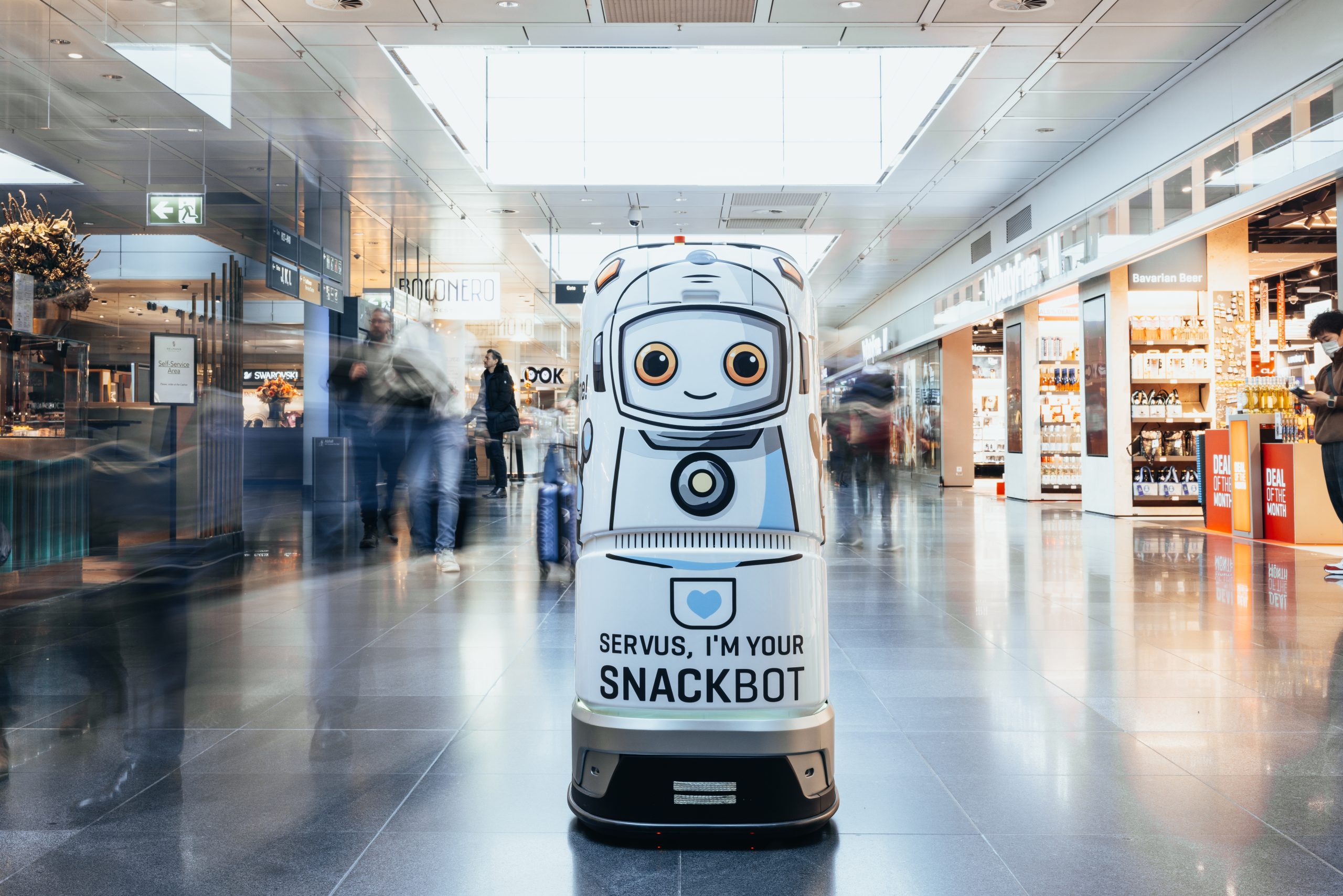

Credit: Munich Airport
You have been trialling smart baggage trolleys, can you explain the service offering, what was the result of this trial and has it been rolled out further?
The smart trolleys have given our customers the opportunity to quickly and easily navigate to their gates and learn about our services in the terminal using multilingual tablets integrated into the carry-on carts. We learned a lot during the trial and want to continue to provide passengers with navigation options and information about our services. Currently, we will not be rolling out the smart trolleys any further, however, we are planning to bring the information to the customer’s device and make it even easier for them to access the content that is relevant to them.
What is the status of the rollout of the biometrics programme at T2?
The implementation of biometric identification at all touchpoints of the passenger journey is a key project that we have been rolling out since 2020, together with our partner Lufthansa. We have already added biometrics to more than 30 touchpoints in the Terminal 2 system at the boarding pass checkpoint, boarding gates, lounge area and soon at the bag tag printers. We continue to work hard to expand this offering and provide our guests with the greatest possible convenience. We believe in this technology and see it as decisive element for the seamless travel of the future.
What is the most interesting challenge you are working on at the moment?
Technologies are evolving rapidly. In our view, the biggest challenge at the moment is to keep pace and to integrate new technological advancements, such as AI and robotics, into our highly complex and well-regulated aviation environment.
air cargo has a relatively low level of automation and digitisation compared to industries such as maritime logistics.”
We recently joined the global Airports for Innovation network (A4I), a group of 10 leading airports working together to identify innovative solutions to improve the passenger experience, deploy common technologies and solutions that make travel easier at airports, and test effective models that can be standardised and adopted across the aviation industry. The network has just launched an open innovation challenge for startups to present solutions to be tested at network airports.
How does Munich work to democratise innovation to ensure it is not just owned by one department?
The magic word is ‘co-operation’. On the one hand, it is our structured internal collaboration: our so-called “Digital Community” is a core element for democratising innovation. It serves as a cross-functional platform of more than 80 experts and innovation or digital enthusiasts from across the organisation.
On the other hand, it is our innovation ecosystem that serves as a key factor for fruitful innovation alliances. We do not only pursue innovation partnerships with airlines (e.g. MUC 2030 initiative with Lufthansa), but also work closely with other airports (e.g. A4I), research institutions such as the Fraunhofer IML (Digital Testbed Air Cargo), and other relevant industry players such as Airbus (e.g. AMI).
Fraunhofer IML has demonstrated the initial results of the ‘Digital Testbed Air Cargo’ (DTAC) research project at Munich Airport. What solutions have been tested and why are they necessary?
The Digital Testbed Air Cargo (DTAC) project recently tested several innovative solutions aimed at enhancing the efficiency and automation of ground handling in air cargo. This is particularly important because air cargo has a relatively low level of automation and digitisation compared to industries such as maritime logistics. This is largely due to the need for flexibility in handling consolidated goods and the complex requirements of different aircraft and airline operations. However, we wanted to demonstrate that more efficient processes can be implemented in air cargo handling by leveraging technology transfer from other industries and developing specialised solutions.
The following technologies have been tested to address the expected growth in air cargo volumes and related challenges such as staff shortages and the demand for faster, more efficient processes (i.e. eCommerce).
- Spot (robot dog)
Boston Dynamics’ Spot, an autonomous robot dog, was deployed to patrol warehouse areas, identify empty or storage-ready pallets, read their pallet codes, and transmit this data, along with the precise location, to a control centre. This data enables other driverless transport vehicles (FTVs) to efficiently carry out transport tasks. - Emma (automated forklift)
Emma, an automated forklift from the Linde E20 series retrofitted by Götting KG, was tested to manage the entire standard goods flow around the automated high-bay warehouse. After Spot has identified the pallets, Emma autonomously transports them to standardised storage locations. When a pickup request is received, Emma retrieves the pallets from storage and delivers them to the truck docks.
- O³dyn (pallet transport robot)
O³dyn, an omnidirectional pallet transport robot developed by Fraunhofer IML, was tested for its ability to operate both indoors and outdoors. It autonomously picks up, transports and positions Euro pallets weighing up to 350 kilograms, with omni wheels for high manoeuvrability in tight and full spaces.
- evoBOT
Another Fraunhofer IML invention – EvoBOT, a robot that balances itself on a single axis, was tested for its capability to operate in tight warehouse areas to handle individual items or packages. Based on the principle of an inverted pendulum, evoBOT is compact, fast and agile, making it versatile for various tasks in intralogistics. At Munich Airport, evoBOT was used to separate packages and feed them into an X-ray scanner, with potential applications like customs inspections or DGR (dangerous goods) handling as well.
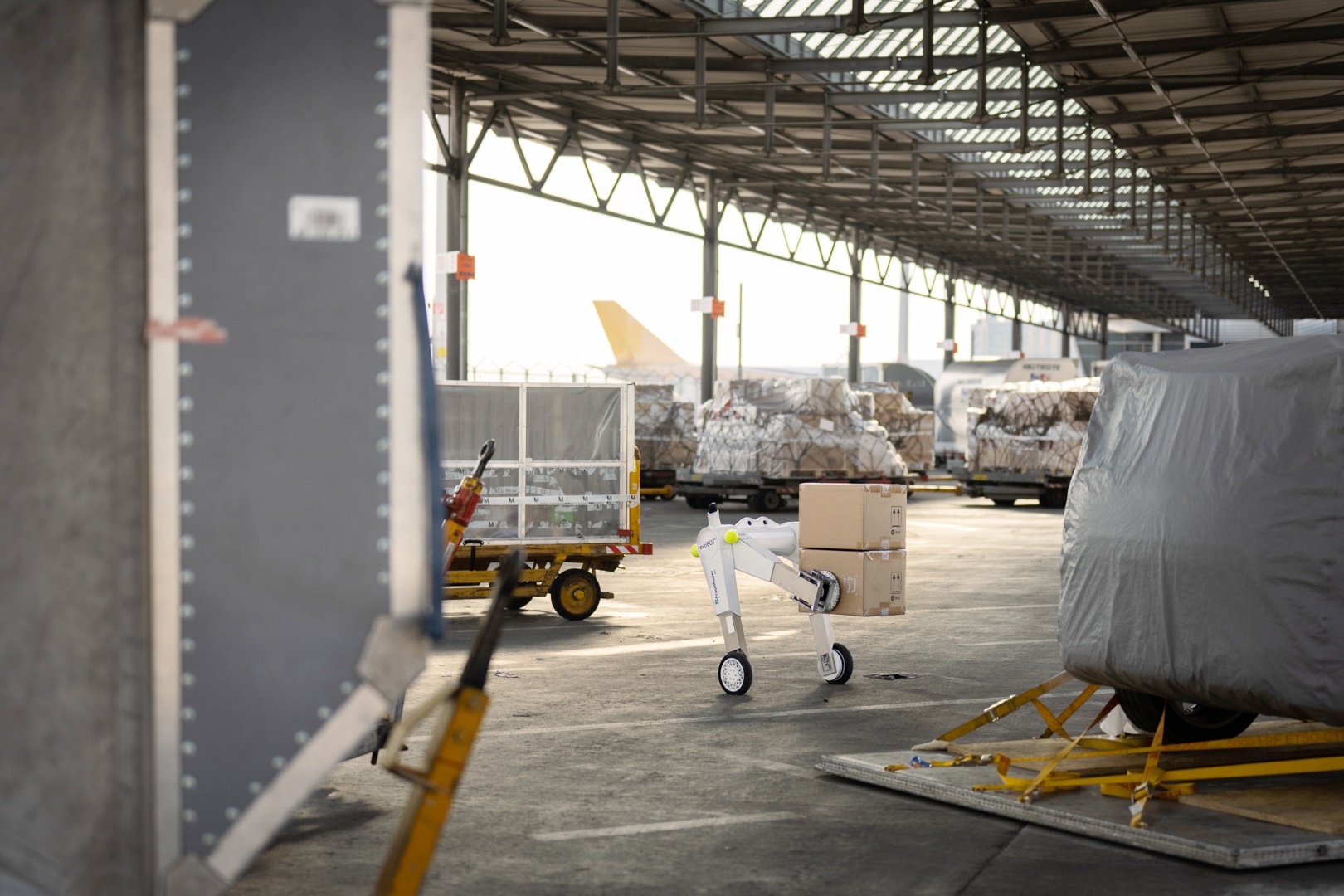

At Munich Airport, evoBOT was used to separate packages and feed them into an X-ray scanner, with potential applications like customs inspections or DGR (dangerous goods) handling as well. Credit: Munich Airport
The automation and digitisation of air cargo handling through the above solutions can significantly improve the competitiveness and efficiency of the industry.
Airbus and Munich Airport International launched an urban air mobility initiative in 2022, what is the latest on this?
The Air Mobility Initiative (AMI) is a groundbreaking research partnership with a bold ambition: to accelerate the development of the Advanced Air Mobility (AAM) ecosystem and pave the way for all-electric flight. More than 30 organisations are collaborating on a series of projects to develop the necessary ground infrastructure (vertiports) at airports and in urban environments, air traffic and airspace management, public acceptance, and the eVTOL aircraft itself to create an entirely new air transportation system.
One of the flagship research projects, spearheaded by Munich Airport International (MAI), is exploring how eVTOLs could be potentially integrated into Munich Airport’s operations with minimal effect on conventional air traffic and the surrounding community all while ensuring maximum safety, passenger satisfaction and profitability. This approach includes detailed demand assessments, in-depth airport site analyses, infrastructure layout, design and development options (both ground and elevated), process definitions, standard operating procedures (SOPs), operational readiness (ORAT), economic feasibility studies, and the complex development of potential flight procedures for integrating eVTOLs within Munich’s parallel runway system. Participating universities are particularly involved in researching noise impact and public acceptance aspects.
These advancements position Munich Airport as a leading airport in Germany’s AAM landscape. Looking into sustainable aviation in general, an additional benefit is the development of expertise in alternative propulsion technologies, particularly in electric flight, which is a crucial competence-building effort for the future, regardless of the developments around eVTOLs.
This year marked a significant milestone with the successful completion of the first research project on vertiport development in the urban environment. Supported by the German Ministry for Digital and Transport, this project was conducted in partnership with Airbus, amd.sigma, Munich Airport International, Goldbeck, and Ingolstadt’s Technical University. The key outcome of this collaboration is a detailed concept for a multi-storey car park vertiport in the area of Ingolstadt. This unique product is now almost ready for construction. This vertiport-ready parking garage is designed to adapt to various locations – either in urban or airport environments – and offers a modular solution that seamlessly integrates with existing ground infrastructure, driving the AAM vision forward.
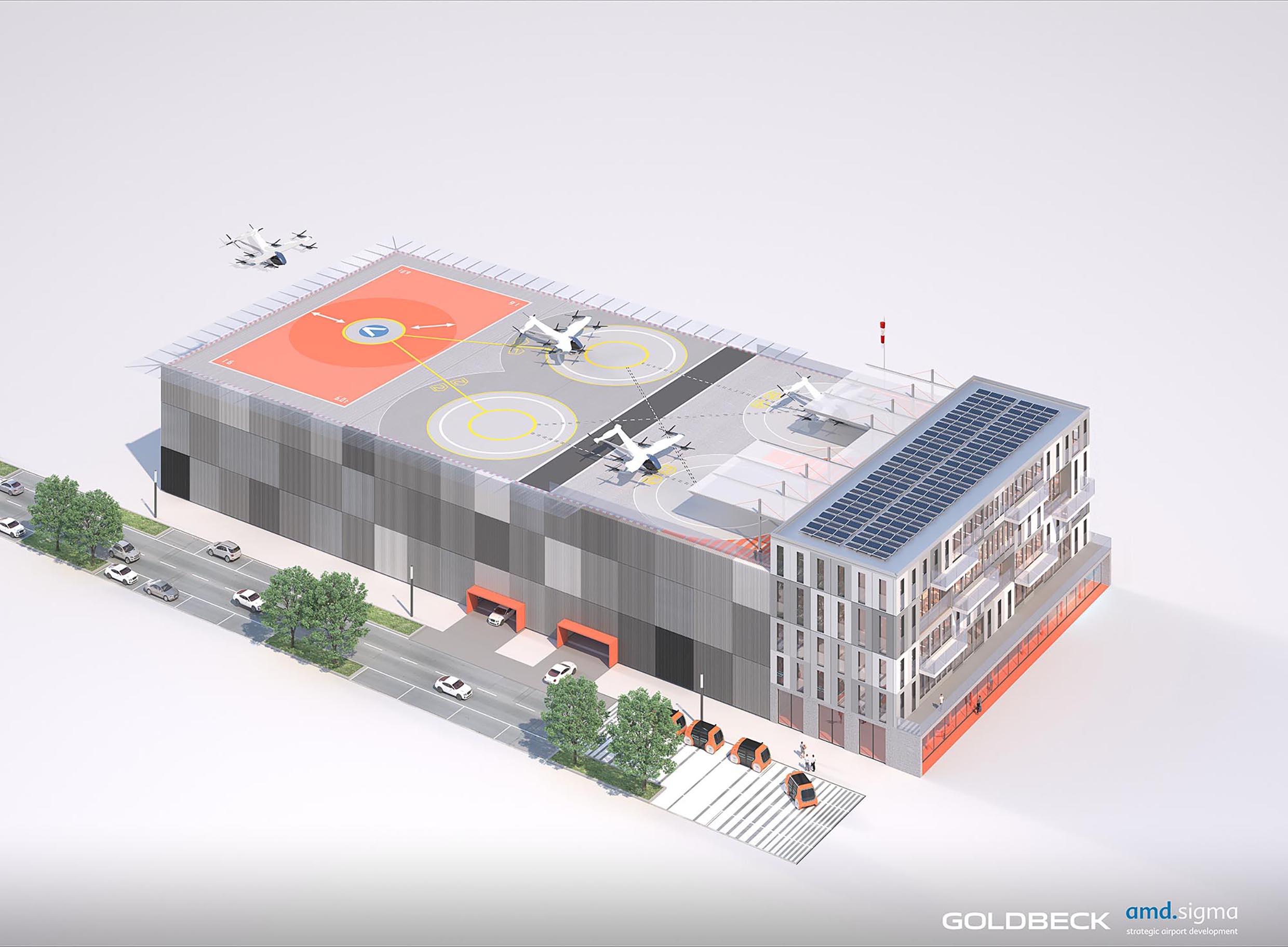

This year marked a significant milestone with the successful completion of the first research project on vertiport development in the urban environment. The key outcome of this collaboration is a detailed concept for a multi-storey car park vertiport. This unique product is now almost ready for construction. Credit: Munich Airport International GmbH & amd.sigma GmbH
MAI’s vision for the future of airports goes far beyond traditional operations, positioning the company to meet the rapidly evolving demands of the aviation industry. Building on the success of its initiatives and global projects, MAI has refined its consulting portfolio to offer a comprehensive range of services. These now encompass airport strategy, sustainability, commercial enhancement, passenger experience, advanced operations and IT, ORAT, and the planning and design of both airports and vertiports, as well as advanced airports.
Your innovation LabCampus opened just over a year ago – what are the most exciting innovations that have emerged thus far?
Since the official opening of our LabCampus, the German Air Traffic Control (DFS), Amplimind (a joint venture between Audi and Lufthansa) and the Airport Academy have already moved in. Exotec will be the next to settle at LabCampus, followed by other companies. All these companies are at the forefront of cutting-edge research and development. DFS, for example, is researching new technologies for the air traffic control of the future. Amplimind is active in software development and Exotec is working on scalable robotic systems. To foster co-innovation, we bring the tenants together with players and companies from the innovation network of the Greater Munich Area. We have already organised a number of events around a variety of forward-looking themes, including “The workplace of tomorrow” and “Artificial intelligence”.
Thank you for the input of my colleagues and partners: Laura Pichler, Elisabeth Brandlmeier, Vera Jakobsen, Lars Mehrtens, Boris Mihajlovic, Oliver Schultes and Fabian Häusler.
About the author


Credit: Munich Airport
Since January 2020, Jost Lammers has been the CEO of Munich Airport.
The experienced aviation manager studied business administration and economics in Bayreuth, Witten-Herdecke, and San Diego. He started his career in aviation in 1998 at HOCHTIEF AirPort GmbH, where he took on various responsibilities at the airport holdings in Düsseldorf and Athens. In the Greek capital, he was involved in commissioning and opening the new airport. From 2008 until his move to Munich, Lammers managed Budapest Liszt Ferenc Airport as CEO.
Lammers got involved in national and international industry associations at an early stage, and for two years starting in June 2019 he has served as president of Airports Council International (ACI) Europe, the European umbrella association for international commercial airports.
Jost Lammers was born in Oldenburg in 1967.
Join our free webinar: Revolutionising India’s travel experience through the Digi Yatra biometric programme.
Air travel is booming, and airports worldwide need to move passengers faster and more efficiently. Join the Digi Yatra Foundation and IDEMIA to discover how this groundbreaking initiative has already enabled over 60 million seamless domestic journeys using biometric identity management.
Date: 16 Dec | Time: 09:00 GMT
rEGISTER NOW TO SECURE YOUR SPOT
Can’t attend live? No worries – register to receive the recording post-event.
Related topics
Advanced air mobility (AAM), Airlines, Airport development, Artificial intelligence (AI), Biometrics, Digital transformation, Innovation, Passenger experience and seamless travel, Robotics, Sustainability, Terminal operations, Workforce
Related airports
Athens Airport, Budapest Liszt Ferenc Airport, Düsseldorf Airport, Munich Airport (MUC)
Related airlines
Related organisations
A4I (Airports for Innovation network), Airbus, Airport Academy, Amplimind (joint venture between Audi and Lufthansa), ams.sigma, Exotec, Fraunhofer IML (Institute for Material Flow and Logistics), German Air Traffic Control (DFS), Goldbeck, Götting KG, Ingolstadt’s Technical University, Lufthansa Group, Lufthansa Innovation Hub, Munich Airport International (MAI)



